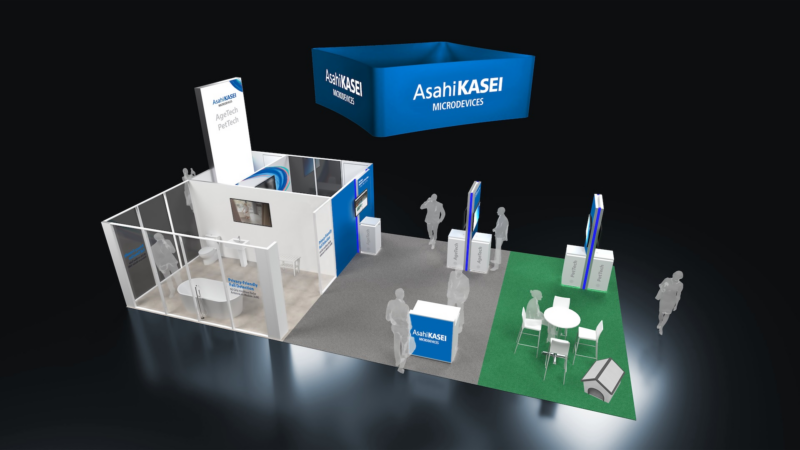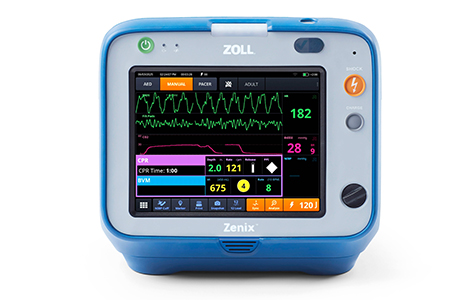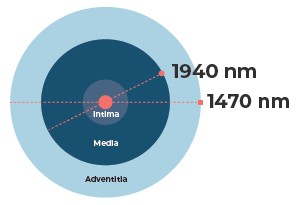After more than six years of development, EPflex Feinwerktechnik GmbH obtained in October 2012 the first CE certification world-wide for an MR safe guide wire. It has the advantage that neither the patient nor the physician is exposed to high levels of radiation compared to conventional imaging techniques and it offers a significantly better image quality.
A guide wire is a wire construction that is often several meters long and is applied in many different fields of minimally invasive medicine. Guide wires are placed into the body through a natural or artificially produced body orifice and guided to the point of treatment predominantly with the help of computer tomography (CT). However, by applying this method, both the patient and the physician are exposed to high levels of radiation. These are even about 100 to 1000 times higher than in case of a normal radiograph, which results in an increased risk of future cancers.
Another imaging technique used in medical technology is the magnetic resonance tomography, but up to now, interventions with guide wires have not been possible. The reason for this is the material of which guide wires are made of – metal. This is heated or even moved through magnetic forces which can cause severe burns or death. Due to the numerous advantages, EPflex Feinwerktechnik GmbH from Dettingen/Erms has set itself the aim of developing a guide wire without metallic components in order to be able to achieve progress in the field of medical technology. The advantages compared to conventional imaging techniques include:
– No harmful x-rays for patient and physician
– Addition of a well-tolerated contrast agent (if at all necessary)
– Superior soft-tissue contrast
– Display of movement of organs possible
– Highly detailed views of individual organs
The development of such guide wire presented EPflex with the enormous challenge to create a guide wire consisting of fibers that offer similar characteristics as a conventional metallic guide wire. These requirements are particularly high, since the guide wire must be of a certain stiffness, which is necessary for ensuring a safe navigation through the human body and besides, its tip must be as flexible as possible in order to prevent injuries.
After years of research, EPflex has developed now a construction whose interior consists of a Kevlar-fiber that is covered by high-strength plastic. Using special markers, the guide wire then can be visualized with MR imaging. In order to additionally improve the guiding inside the body, the guide wire has a hydrophilic coating that provides an extremely lubricious surface when combined with water.
There are currently clinical studies ongoing focusing on diagnostics and applications in cardiology.
EPflex Feinwerktechnik GmbH ist ein nach DIN ISO 13485 zertifizierter OEM Hersteller von Metallkomponenten für die Medizintechnik. Die Produktpalette umfasst Führungsdrähte, Steinfangkörbchen, Stiletts, Hypotubes, sowie kundenspezifische Sonderprodukte. Neben Edelstahl wird vermehrt Nitinol verarbeitet, die Produkte können PTFE, Parylene oder hydrophil beschichtet werden. Seit dem Einzug in das neue Produktionsgebäude im Januar 2012 stehen EPflex nun insgesamt 4.300 Quadratmeter Produktionsfläche zur Verfügung. Die jährliche Wachstumsrate des Unternehmens liegt zwischen 10 und 12 %. Rund 275 Mitarbeiter erwirtschaften derzeit einen Jahresumsatz von 19 Millionen Euro, wovon über 50 % durch Führungsdrähte erwirtschaftet werden.
Kontakt:
EPflex Feinwerktechnik GmbH
Sandra Schrade
Im Schwöllbogen 24
72581 Dettingen an der Erms
+49 (0)7123 9784 0
sandra.schrade@epflex.com
http://www.epflex.de






